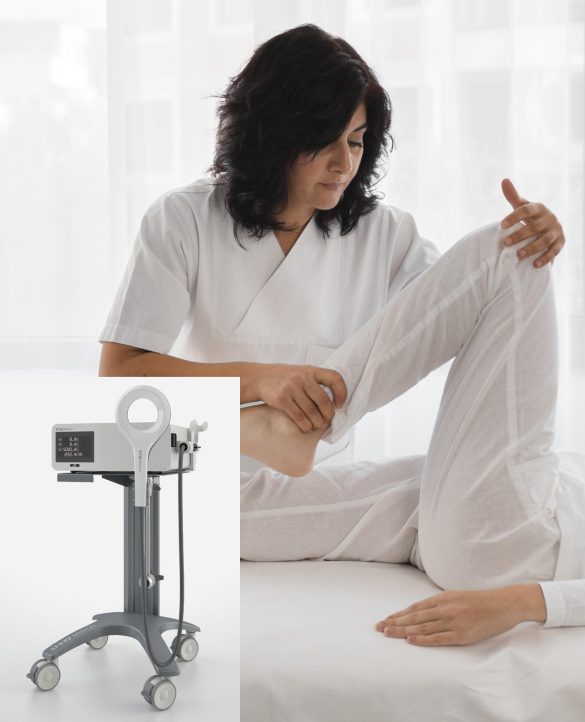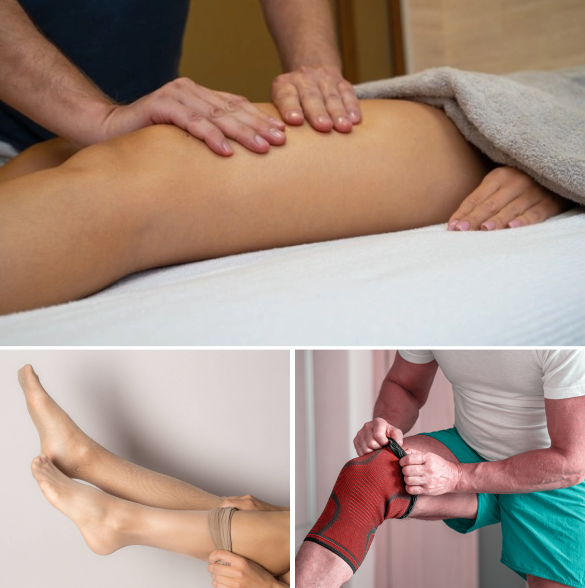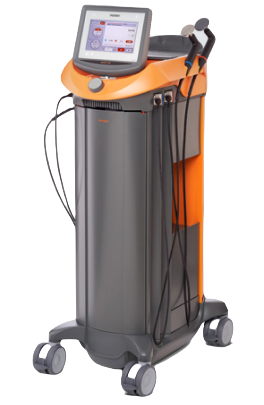Lymphedema is a chronic condition marked by swelling and fluid accumulation in the interstitial spaces of the extremities. It is caused by a blockage in the lymphatic system — a critical part of the immune system that serves to keep body fluids in balance. Blockages prevent lymphatic fluid from being transported to the lymph nodes.
Lymphedema is common among cancer patients whose treatment has damaged the lymphatic system. It is especially common among breast cancer patients, due to the close proximity of the breasts to lymph nodes. It may also occur in obese people with chronic inflammation and metabolic disease.
Extracorporeal shockwave therapy (ESWT) is an evidence-based therapeutic approach for lymphedema treatment.
or
Dr. Kalika has dedicated his life’s work to finding the most effective therapies and technologies for treating pain syndromes and movement disorders. As an expert in diagnostic ultrasonography and extracorporeal shockwave therapy, he has successfully brought relief to hundreds of grateful patients.
The clinic at NYDNRehab features some of the most advanced technologies and therapies available, many of which are rarely found in a private clinical setting. Dr. Kalika’s expertise, coupled with years of hands-on experience, make him one of the most sought-after lymphedema doctors in NYC.

One thing that makes cancer so insidious is the harsh side effects of many cancer treatments. Lymphedema is a chronic condition caused by damage to the lymphatic drainage system. When lymph fluids cannot drain, swelling, inflammation and accumulation of protein occur in body tissues. Over time, lymphedema patients may develop fibrosis, a thickening and hardening of the tissues,
At NYDNRehab, new technologies are changing the game in lymphedema treatment. Therapies like shockwaves, TECAR therapy, specialized lymphedema manual therapy, and physical therapy can help to move fluid out of the tissues, to keep the condition from advancing and prevent fibrosis.
Our personalized one-on-one approach ensures that you get a customized treatment protocol based on your unique diagnosis. We closely monitor your progress and make adjustments to your lymphedema treatment plan as needed, to give you the best results possible in the shortest amount of time.
There are various modalities for diagnosing lymphedema. Until recently, lymphoscintigraphy was considered the gold standard, where a radioactive substance is injected into the body and its pathway traced to see if it is taken up by the lymph nodes. However, poor image resolution and variables in protocol can make diagnosis difficult using this approach.
High-resolution diagnostic ultrasonography offers a simpler and less invasive alternative to lymphoscintigraphy. With ultrasound imaging, we are able to measure tissue thickness and locate obstructions in the lymphatic system. In addition, we use sonoelastography, a new technology that measures tissue stiffness — fluid-filled tissues are much denser and stiffer than non-affected tissues.
The clinic at NYDNRehab features the most advanced, highest-resolution ultrasonography equipment available, with capabilities for sonoelastography. Dr. Kalika is an expert in ultrasound imaging, with years of experience and multiple scientific publications to his credit. We believe that accurate diagnosis is fundamental to effective and successful lymphedema treatment.


Standard treatment for lymphedema focuses on managing the condition using compression wraps and stockings, and massage. The goal is to force fluid out of interstitial spaces and transport it to the lymph nodes for clearance.
Exercise is also an important management tool. Rhythmic muscle contraction facilitates the movement of lymphatic fluid out of the tissues, for transport to the lymph nodes. Complex decongestive lymphedema physical therapy combines skin care, lymphatic drainage, compression tools, and exercise, to promote lymph flow.
At NYDNRehab, we combine standard lymphedema treatment and lymphedema physical therapy with advanced technologies and lymphedema alternative treatment methods to optimize patient outcomes.

INDIBA Radiofrequency Therapy
Extracorporeal shockwave therapy (ESWT) is a non-invasive treatment approach that promotes lymphatic neovascularization – the genesis of new lymph vessels for fluid transport. Shockwave therapy is especially effective for treating fibrotic lesions in swollen tissues.
INDIBA therapy is a type of transfer of energy capacitive and resistive (TECAR) therapy that helps to restore the ionic charge of damaged cells. TECAR therapy has a thermal effect that helps to prepare tissues for manual therapy, to facilitate the movement of lymphatic fluids out of interstitial spaces.
Managing lymphedema is an ongoing battle, but you don’t have to fight it alone. At NYDNRehab, we use the most advanced techniques and cutting-edge technologies to keep your lymphatic fluid on the move. Our professional staff works one-on-one with you, to ensure you get the best results from your therapy. Don’t settle for mediocre treatment for lymphedema. Get superior results with the lymphedema specialists at NYDNRehab.
Dr. Lev Kalika is a world-recognized expert in musculoskeletal medicine. with 20+ years of clinical experience in diagnostic musculoskeletal ultrasonography, rehabilitative sports medicine and conservative orthopedics. In addition to operating his clinical practice in Manhattan, he regularly publishes peer-reviewed research on ultrasound-guided therapies and procedures. He serves as a peer reviewer for Springer Nature.
Dr. Kalika is an esteemed member of multiple professional organizations, including: